
![]()

Playing cards are an integral part of American and global culture. Used in game rooms, casinos, back rooms, and bridge clubs; cards break the lines of class, race, gender, and economic status. But the standard 4-suited deck is limited in the number of players and in the games that can be played. For years, designers and developers have sought to add additional suits to the deck. My father had such a deck (details below) and I was fascinated by the idea of 6 suits, but the new suits in that deck were not appropriate to the other suits. In the 1980s, I assessed the existing suits and explored options that would be a better fit into the deck. Refined periodically over the years, Deck6 is the culmination of that design process.
Assessment of the existing suits

All 4 suits share some commonalities:
• Symmetrical on a vertical axis (the diamond is also symmetrical on a horizontal axis).
• Share similar forms: solid shapes and curvilinear lines.
• Their names are short and easy to say, although some refer to the clubs as clovers since they don't look like clubs.
• The two black suits have identical stem bases and the two red suits have identical pointed bases:

Some objectives for the new suits
• Match, blend in, and fit with the existing 4 suits
• Be distinct from the existing 4 suits
• Be easy to recognize
• Be easy to remember
• Be minimally offensive
• Be easy to render and reproduce
• Use names that are short, appropriate, and easy to say

The new suits are Cups and Shields, paying homage to the Medieval European roots of the names and symbols. Cups could be called Chalice or Grail, but those names are a bit more obscure and uncommon. Below: the bases of the 3 black suits and the 3 red suits are almost identical. The tops share the same language of color and form. The new suits meet the main objectives of fitting in with the existing 4 suits while being distinct enough to not be confused with the existing suits.






Name and logo
The name and graphic mark:
• Convey the unique selling point - that there are six suits in the deck of cards.
• Use colors that are familiar to a deck of cards.
• Are rendered in a typeface that respects the one used on existing cards.
• Suggest the simple combination of descriptive word and number.
![]()
SHP Games designed and produced the Deck6 cards.
C. Scott Davis, the founder and owner of SHP Games, emailed me in 2015:
For a long time I've wanted a nice, clean 6-suited deck of playing cards, but most of them are either no longer available or use really strange suits. While looking into the subject, I stumbled across your beautifully designed suits that include 5th and 6th suits (cups and shields). Not only do your suits perfectly match the existing suits in style and color, but they also just look really fantastic.
I found the images on several public domain image sites, but after doing a bit of searching, I managed to trace them back to your web site. I would very much like to make a deck of cards using these suit symbols.
We messaged and agreed it would be a hoot for him to produce and market the 6-suited deck. Scott developed the design of the card faces, the pattern for the backs, the face cards, some intro and info cards, and the box. SHP Games produced, printed, and marketed Deck6 in the summer of 2016.
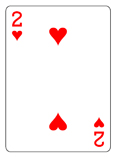

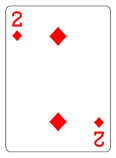
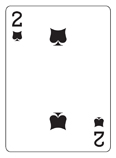
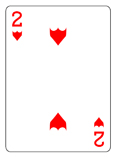




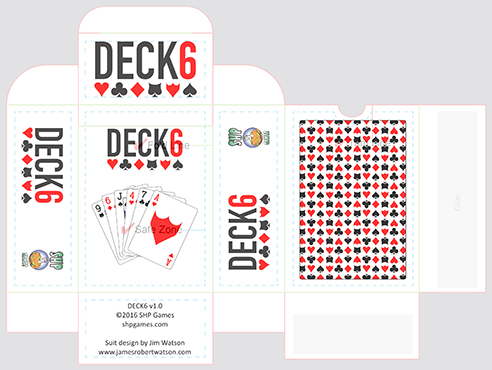
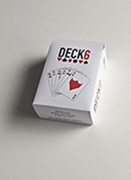

![]() Click to buy a set of Deck6 cards from SHP Games
Click to buy a set of Deck6 cards from SHP Games

![]()


Magic Orthodoxy is a review site by David, a magician and card collector for over 20 years. He created a YouTube channel in 2013 when a friend asked him to review a deck, and he's been doing it ever since. In 2017, David reviewed Deck6 (unfortunately, he speaks as if I produced and marketed Deck6 - that was Scott Davis. I was the concept designer.)
User reviews
• I gave this as a gift. She loves it, and plays solitaire with this deck often. It's been over a year and I haven't a four suit deck in her hands since.
• I came across these and decided to buy a deck because we have sometime 6-10 people playing at work. I bought a second deck just before the pandemic for when we have the occasional 12 players. Everyone loves them. This will also allow the traditional 4 player games to be played by 6 players. If you play card games, get this.
• Nice Artwork. Well worth the price for the quality of the cards! Plus the fact that they allow us to play favorite games with 5 & 6 people instead of only 3-4 people. Thank you!
• I'm very impressed with the quality and printing of Deck6. I've played many of my favorite solitaire games with it with minimal rule changes. This deck makes the games a little more challenging and longer to play. Appreciate the abundance of jokers too. Thanks!
• Great deck, we had lots of fun.
• Disgustingly overpriced, but the suits are at least well designed.
Dates
Concept of 6 suits: 1977-1979
Research of previous attempts: Soon after
Research & development of Cups & Shields:
1979
Class assignments: 1979-2008
This webpage uploaded:
2001-2008?
Scott contacts Jim: May 2015
Production and marketing by SHP Games: Summer 2016
Review by Magic Orthodoxy: January 2017
![]()
An earlier failed attempt


In the 1960s, a company in Dallas marketed Nu-Dek, the Sextet set of playing cards. From their instruction sheet: Not intended to replace the 4-handed game, but to supplement it by providing a compatible game for those occasions when chance or preference brings 6 people together to play a game. No bridge host or hostess need now be flustered by an extra, or missing couple. The designers of Nu-Dek cards attached romantic symbolism to all the suits: industry to spades, romance to hearts, wealth to diamonds, conflict to clubs, and now commerce to wheels (a ship's wheel - emblematic of commerce), and sports to rackets. The Nu-Dek set apparently didn't succeed in the marketplace.
The design of the two new suits does not meet the visual criteria established by the existing 4 suits. The rackets have an outline,while the wheels have negative spaces, detail, and an outline. The rackets get close to matching by having curves and a mass, but the wheels just do not visually belong with the other 5 suit symbols. They are both symmetrical and a single solid color. My father had a Sextet deck (I don't know how he got it); this deck may have inspired me to find a better way.
![]()
Brief history of playing cards
The earliest playing cards were Korean and came from the practice of fortune telling. Made of silk, they were about 8 inches long and half an inch wide, with backs covered in feather-like patterns. Their paper counterparts can be attributed to T'ang Dynasty China, years 618-907, called Domino Cards. Playing cards made their way from China to the Middle East in the 700s, when papermaking was introduced to Persia by Chinese prisoners taken in battle. Over the centuries, Persian cards begat Hindu cards - round decks called Ganjifa, popularized by 1500s Mughal emperors and featuring images of people, animals, and divinities, and ornamental pip cards 1 through 10.
While all playing cards carry recessive genes from their Eastern ancestors, the lineage of European specimens flows directly up from the Nile. Card fragments from 1200s Egypt show that mameluks, the ruling Islamic military caste, introduced a 52-card deck with four suits: polo sticks, coins, swords, and cups. In keeping with Muslim tradition, no figures appear on the 'court' cards, but the abstractly ornate malik (king), na'ib malik (viceroy), and thani na'ib (deputy) cards were marked with the names of military leaders.
By the late 1300s, the Egyptian suits had been adopted in Muslim Spain as well as in Italy. Both countries translated the polo sticks into club-like batons. Germany and central European countries developed their own iconography of hearts, bells, leaves, and acorns. And by the late 1400s, France, which had been playing cards for a century, codified the familiar quartet of hearts, diamonds, spades, and clubs. The same system was adopted by the English, whose earliest surviving deck dates from 1590.
Popular in England, 'transformation cards', which came into vogue in the 1700s, pictured hearts, spades, diamonds, and clubs entwined in the bodies of animals and people. Reversible court cards(with heads on both the top and bottom) were devised in the 1700s so players wouldn't give their hands away when their face cards were turned right side up. The corner indices (the numbers and symbols that allow cards to be held in a fan) were a feature of Spanish and Italian decks as early as 1693, but the protocol didn't become widespread until the New York Consolidated Card Company patented its 'Squeezers' in 1875.
Info from Susan Yelavich, Parsons, The New School for Design
https://www.jamesrobertwatson.com/deck6.html
![]()
![]()
![]()
![]()